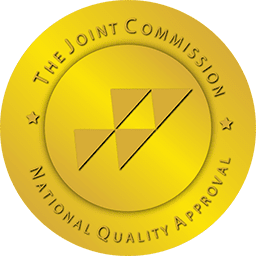[vc_row type=”in_container” full_screen_row_position=”middle” column_margin=”default” column_direction=”default” column_direction_tablet=”default” column_direction_phone=”default” scene_position=”center” text_color=”dark” text_align=”left” row_border_radius=”none” row_border_radius_applies=”bg” overflow=”visible” overlay_strength=”0.3″ gradient_direction=”left_to_right” shape_divider_position=”bottom” bg_image_animation=”none”][vc_column column_padding=”no-extra-padding” column_padding_tablet=”inherit” column_padding_phone=”inherit” column_padding_position=”all” column_element_direction_desktop=”default” column_element_spacing=”default” desktop_text_alignment=”default” tablet_text_alignment=”default” phone_text_alignment=”default” background_color_opacity=”1″ background_hover_color_opacity=”1″ column_backdrop_filter=”none” column_shadow=”none” column_border_radius=”none” column_link_target=”_self” column_position=”default” gradient_direction=”left_to_right” overlay_strength=”0.3″ width=”1/1″ tablet_width_inherit=”default” animation_type=”default” bg_image_animation=”none” border_type=”simple” column_border_width=”none” column_border_style=”solid”][vc_column_text]Post-traumatic Stress Disorder (PTSD) is a serious psychological disorder established when a person witnesses or survives a traumatic event. In some cases, these events are brief and very intense, like a near-death experience in a car accident, or can last much longer, such as sexual or physical abuse throughout a person’s childhood.
Although PTSD does not directly cause addiction, it’s often accompanied by substance abuse and addiction, as drugs of abuse can temporarily suppress the painful symptoms of PTSD. Of people seeking treatment for substance abuse disorders, 35% to over 60% will also have PTSD, while 3.6% of all US adults live with PTSD.
Causes and Symptoms of PTSD
Although researchers have identified the specific events that cause PTSD, the neurological causes are less well-understood. The determinants of what causes some people to experience symptoms for days to weeks, which then go away, in contrast to others who may suffer for years, are also under study.
What Causes PTSD
The situations that lead to PTSD have several things in common: the threat of imminent death, extreme violence, or grave personal harm. The person has little or no control over their situation or the outcome, and their ability to protect themselves is limited or non-existent.
PTSD causes long-lasting chemical changes in how a person’s nervous system works. The brains of people with PTSD produce fewer endorphins than those of non-affected people. Their bodies also make more stress hormones than people who do not live with PTSD.
Endorphins are the natural painkillers our bodies need to self-soothe when in pain or distress. In addition, many drugs of abuse, like cocaine, alcohol, and opiates, can temporarily boost endorphin production, leading to a brief period of an improved mood.
The neurological changes don’t stop there. Those with PTSD also have increased production of noradrenaline in the brain, which causes a sustained state of elevated anxiety, hyper-alertness, and easily elevated pulse and blood pressure. High noradrenaline levels also lead to a constant subjective feeling of danger. The same drugs of abuse that increase the production of endorphins may also temporarily decrease the overproduction of noradrenaline.
Essentially, a person with PTSD has a nervous system stuck in “fight-or-flight” mode, with a decreased ability to naturally self-soothe while being perpetually stressed.
Typical causes of PTSD include:
- Military combat
- Life-threatening accidents
- Assaults, such as a mugging or rape
- Natural disasters
- Physical, sexual, or emotional abuse
- Witnessing a loved one die
Symptoms of PTSD
The symptoms of PTSD are grouped into 4 categories: intrusive memories and re-experiencing, avoidance, negative changes in one’s emotions, thoughts, and mood, and changes in emotional and physical reactions.
Intrusive thoughts and re-experiencing include:
- Unwanted, intrusive memories of the event
- Flashbacks. Flashbacks are intense, unwanted, and uncontrollable episodes of reliving the event
- Nightmares about the event
- Intense physical or emotional reactions to anything that prompts a reminder of the traumatic event.
Avoidance:
- People will try to avoid talking or thinking about the event
- Avoid places, people, or situations that remind them of the traumatic event, even in general.
Negative changes in a person’s mood and thinking:
- Feeling emotionally numb or empty
- Pessimism about the future
- Negative feelings about oneself or others
- Feelings of hopelessness about one’s condition
- Feelings of helplessness to change one’s situation
- Inability to feel pleasure or happiness (anhedonia)
- Problems remembering aspects of the event
- Loss of interest in formerly enjoyable activities
- Feelings of detachment from friends and family
Changes in emotional and physical reactions:
- Elevated startle response, particularly about noises or being touched
- Overwhelming feelings of guilt, shame, or self-loathing
- Hyper alertness—always on guard for threats or danger
- Bursts of aggression, irritability, or anger
- Easily frustrated
- Insomnia
- Dangerous behaviors, like increased alcohol consumption, driving drunk, fighting, or substance abuse
PTSD And Co-Occurring Addiction
The typical pattern for PTSD and co-occurring addiction disorders is that PTSD becomes established along with its deeply distressing symptoms. Then, people self-medicate with addictive substances in an attempt to control their PTSD symptoms.
This leads to a co-occurring addiction disorder. In addition, other social problems usually accompany PTSD coupled with addiction, such as job losses, problems with relationships, legal issues, and so forth.
PTSD and Addiction Statistics
- Up to 59% of young people with PTSD develop substance abuse problems in later life.
- 46.4% of people with PTSD also meet the diagnostic criteria for substance abuse disorder.
- 30% to 59% of women with a substance abuse disorder also meet the criteria for PTSD.
- The most common cause of PTSD in women is childhood sexual abuse.
- Concurrent treatment (dual diagnosis treatment) of substance addiction and PTSD is the most effective management.
- PTSD and addiction are particularly common in combat veterans, with about 10% having PTSD and an addiction disorder.
PTSD and Addiction Treatment
Treatment that addresses PTSD and addiction disorders simultaneously is called dual diagnosis treatment. Dual diagnosis treatment uses an integrative treatment model that addresses the physical, emotional, and psychological contexts in which both disorders occur.
The integrative model, sometimes called a holistic treatment approach, is the most effective way to resolve both conditions.
The Importance of Dual Diagnosis Treatment
The National Alliance on Mental Illness (NAMI) identifies “dual diagnosis” as a condition in which a person simultaneously has a substance use disorder and a mental illness. The dual diagnosis of PTSD and an addiction disorder is essential because both conditions must be treated simultaneously.
In the past, treatment specialists have attempted—to no success—to treat addiction first, then move on to PTSD. On the other hand, only dual diagnosis treatment will resolve both disorders, as addiction disorders and PTSD become inextricably tied together, with one condition fueling the other.
People use addictive substances to suppress the distress caused by PTSD symptoms, which pairs PTSD with cravings for those addictive substances. Unfortunately, neither will resolve until both conditions are brought under better control.
Call Us Today
If you are looking for a multi-phased, quality continuum of clinical care, Absolute Awakenings Treatment Center is here to help. To learn more, give us a call today. We look forward to speaking with you soon and getting you started on your journey of addiction recovery as quickly as possible.
References
- McCauley JL, Killeen T, Gros DF, Brady KT, Back SE. Post-traumatic Stress Disorder and Co-Occurring Substance Use Disorders: Advances in Assessment and Treatment. Clin Psychol (New York). 2012;19(3):10.1111/cpsp.12006. doi:10.1111/cpsp.12006
- Post-Traumatic Stress Disorder (PTSD). National Institute of Mental Health (NIMH). Accessed January 15, 2023. https://www.nimh.nih.gov/health/statistics/post-traumatic-stress-disorder-ptsd
- Sherin JE, Nemeroff CB. Post-traumatic stress disorder: the neurobiological impact of psychological trauma. Dialogues Clin Neurosci. 2011;13(3):263-278.
- Symptoms of PTSD | Anxiety and Depression. Accessed January 15, 2023. https://adaa.org/understanding-anxiety/posttraumatic-stress-disorder-ptsd/symptoms
- van Dam D, Vedel E, Ehring T, Emmelkamp PMG. Psychological treatments for concurrent post-traumatic stress disorder and substance use disorder: A systematic review. Clinical Psychology Review. 2012;32(3):202-214. doi:10.1016/j.cpr.2012.01.004
- Khoury L, Tang YL, Bradley B, Cubells JF, Ressler KJ. Substance use, childhood traumatic experience, and Posttraumatic Stress Disorder in an urban civilian population. Depress Anxiety. 2010;27(12):1077-1086. doi:10.1002/da.20751
- Najavits LM, Weiss RD, Shaw SR. The link between substance abuse and post-traumatic stress disorder in women. A research review. Am J Addict. 1997;6(4):273-283.
- VA.gov | Veterans Affairs. Accessed January 15, 2023. https://www.ptsd.va.gov/understand/related/substance_abuse_vet.asp#:~:text=In%20the%20wars%20in%20Iraq,problems%20tend%20to%20binge%20drink.
- Substance Use Disorders | NAMI: National Alliance on Mental Illness. Accessed January 15, 2023. https://www.nami.org/About-Mental-Illness/Common-with-Mental-Illness/Substance-Use-Disorders
[/vc_column_text][/vc_column][/vc_row]













